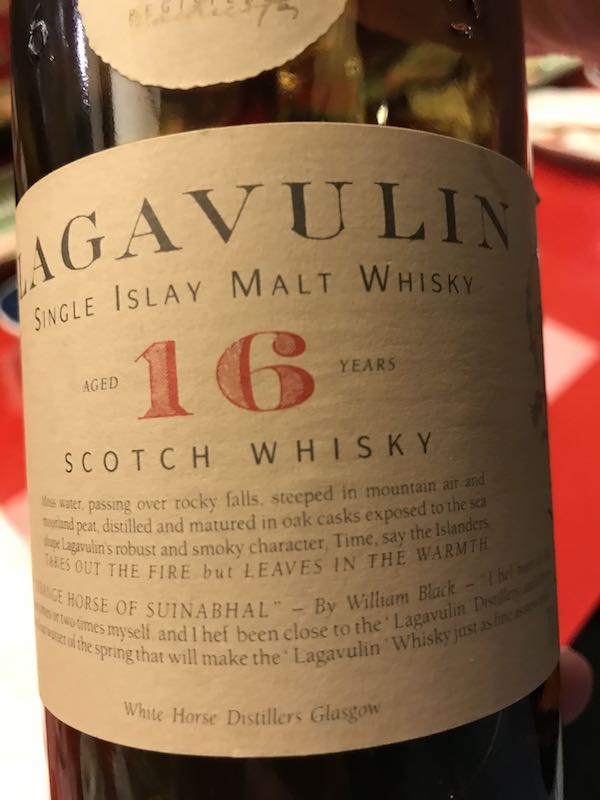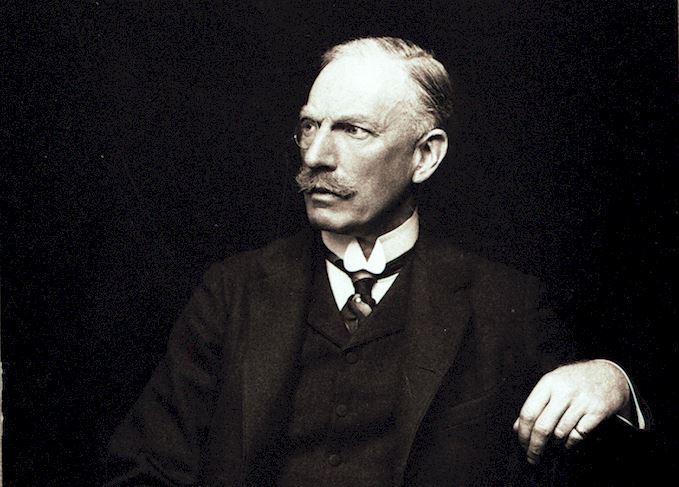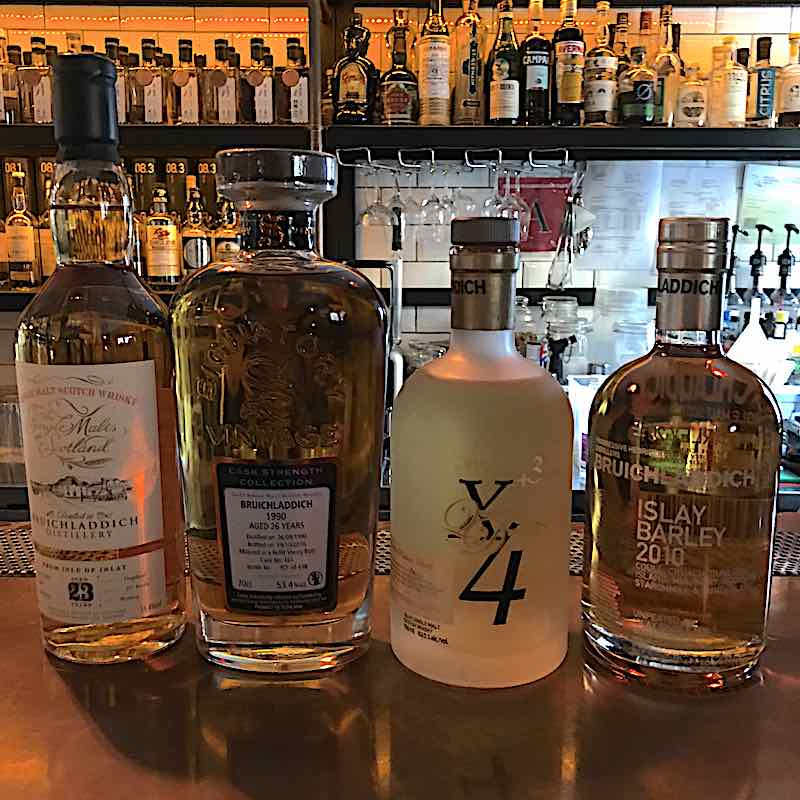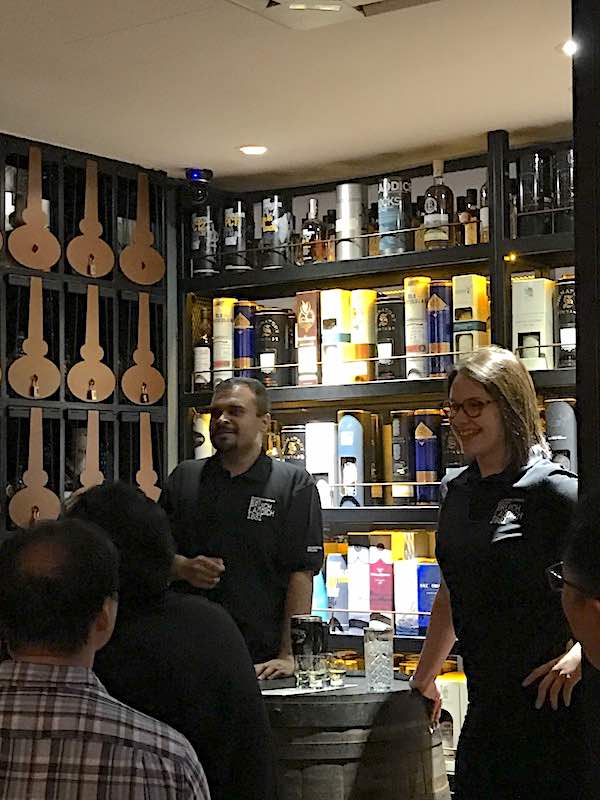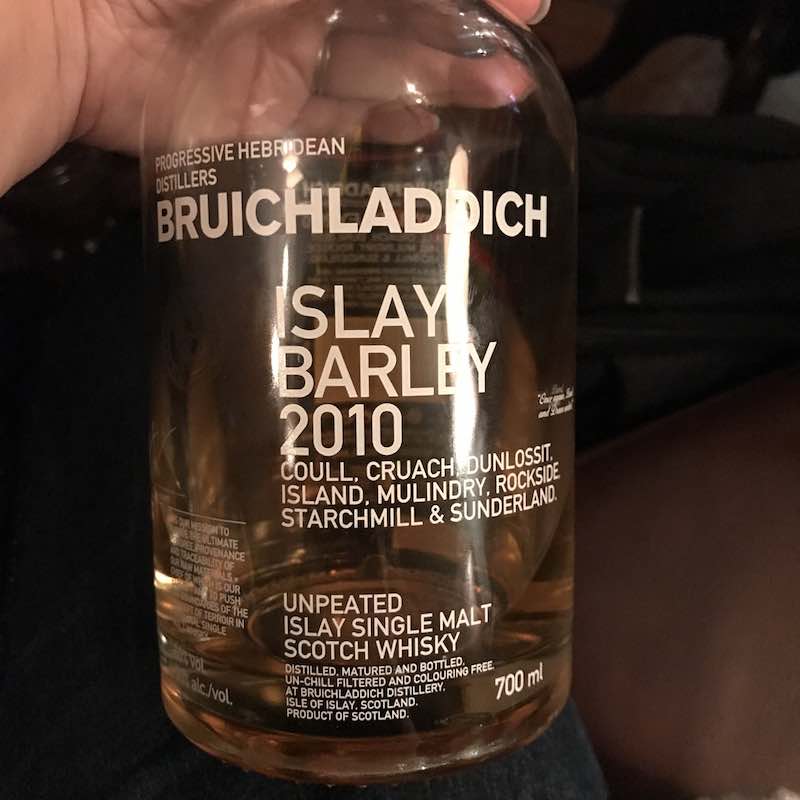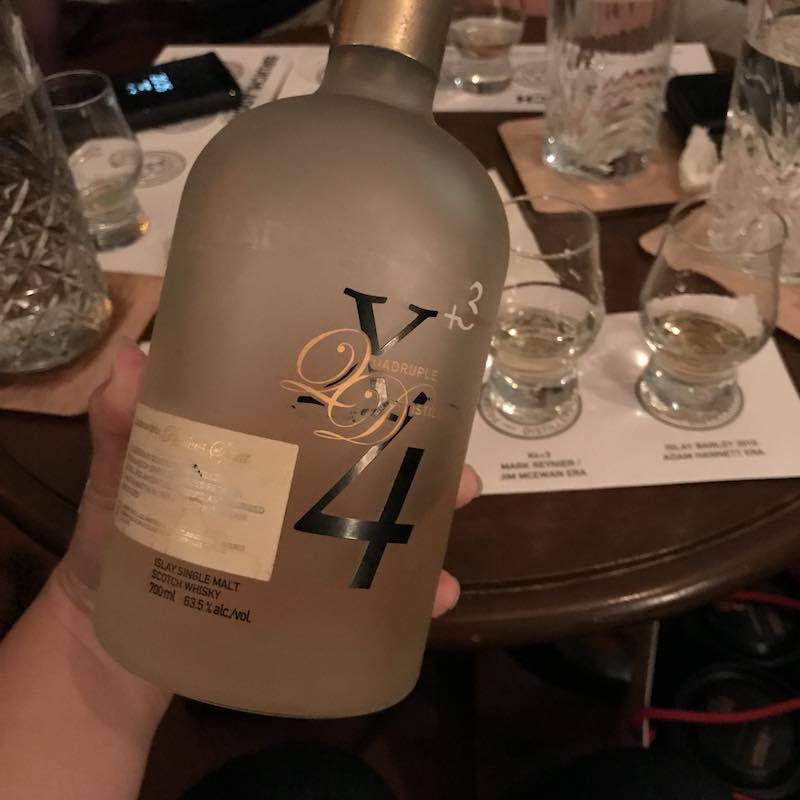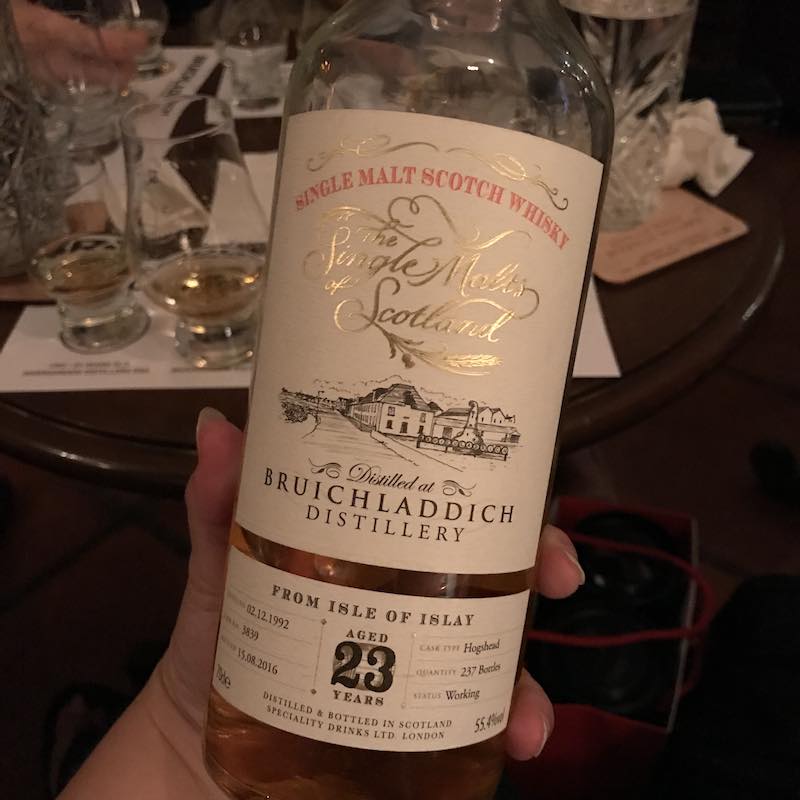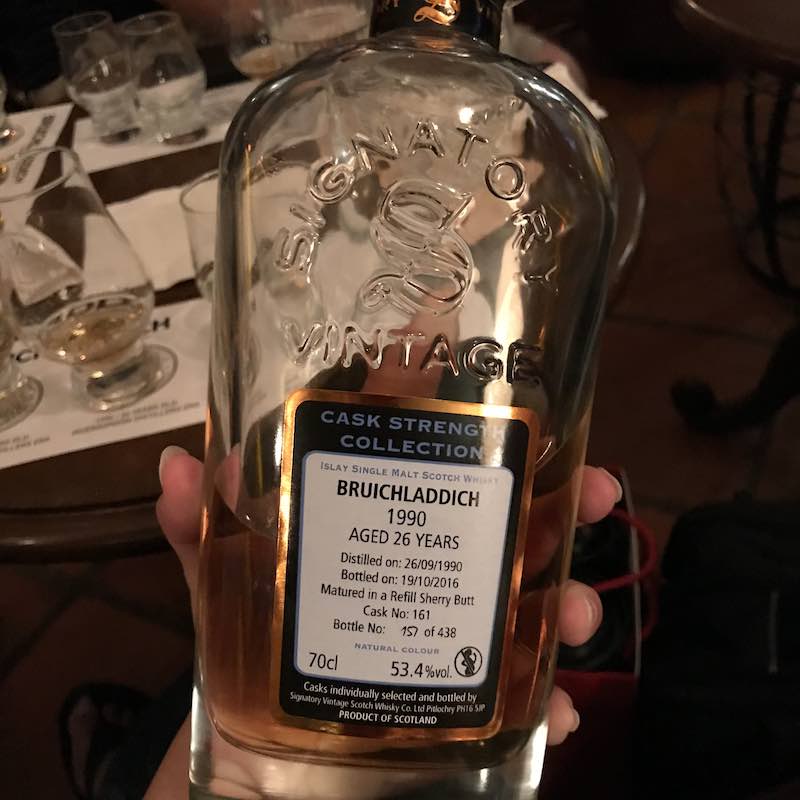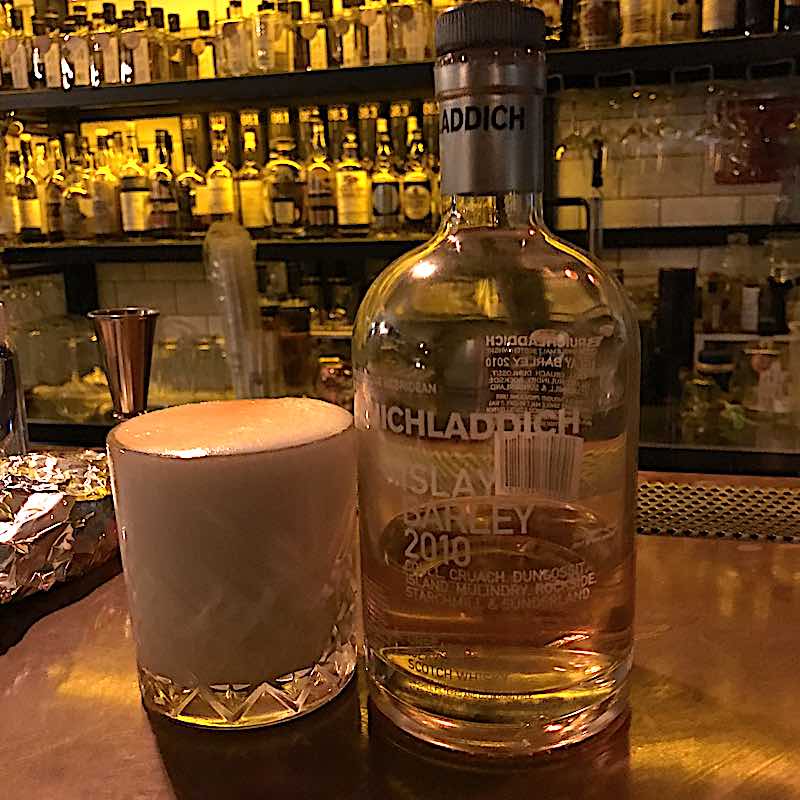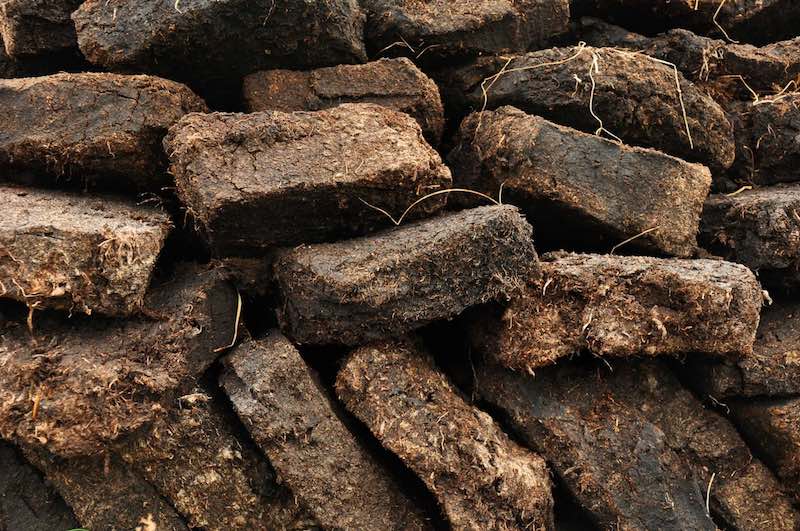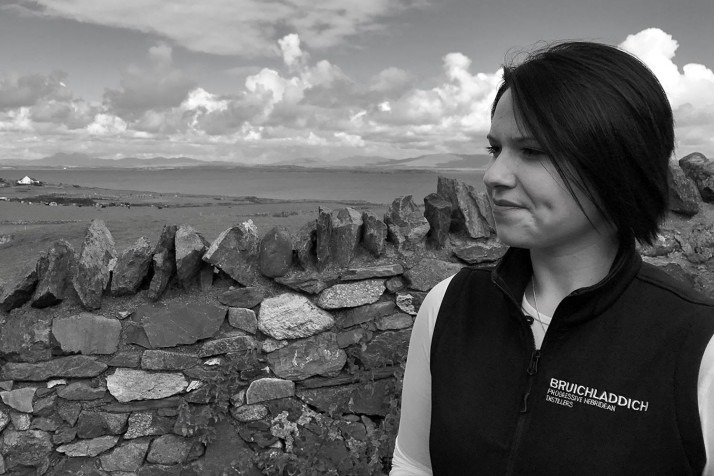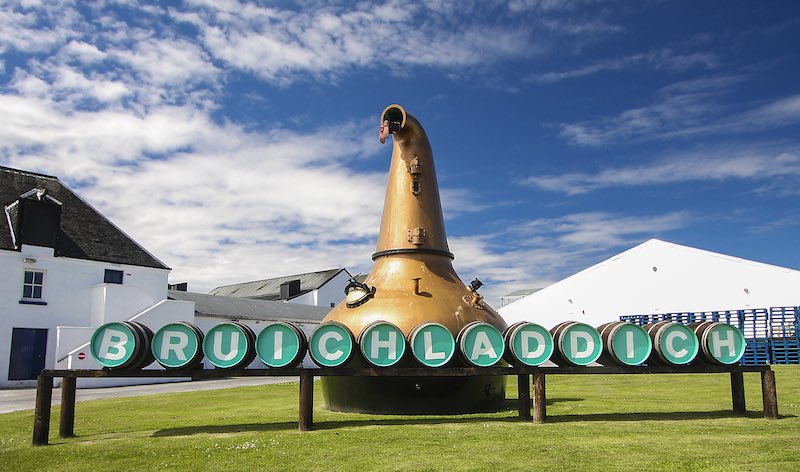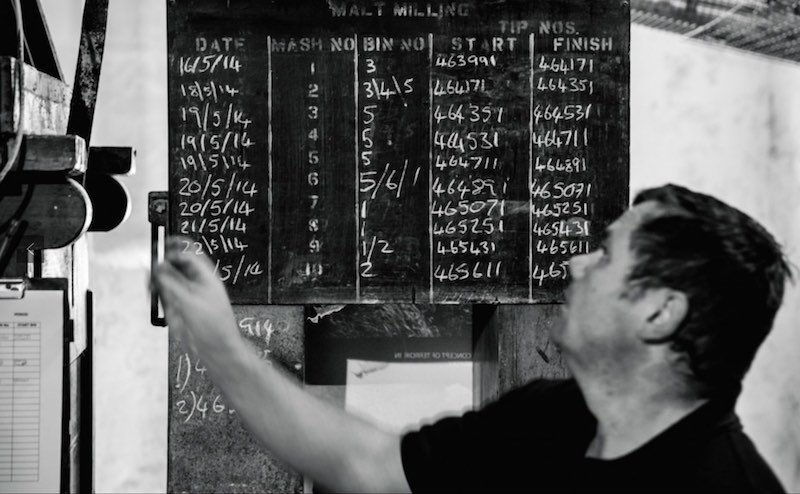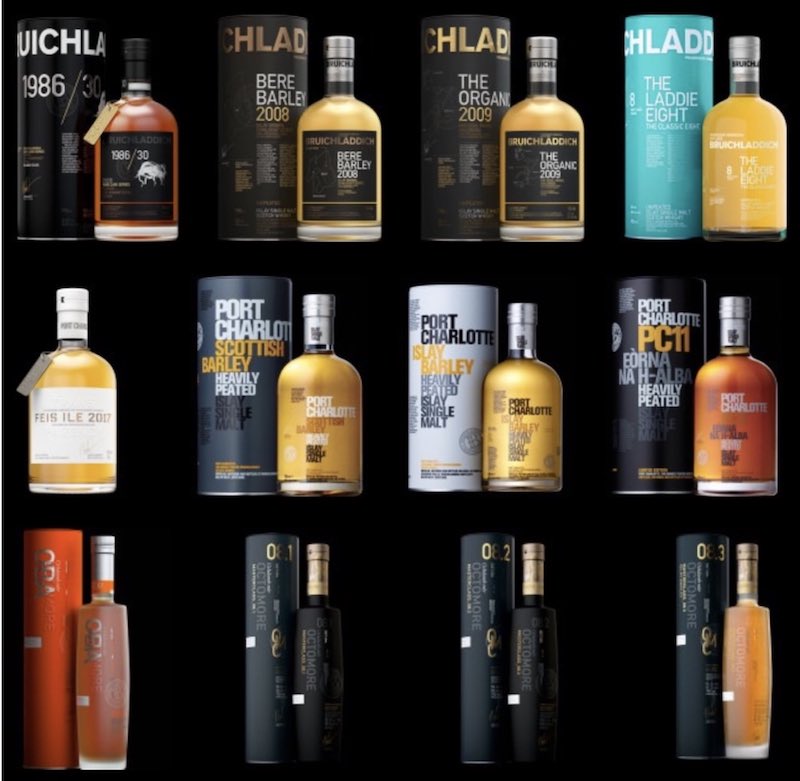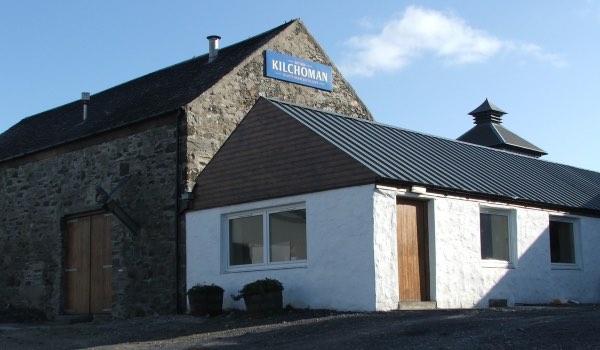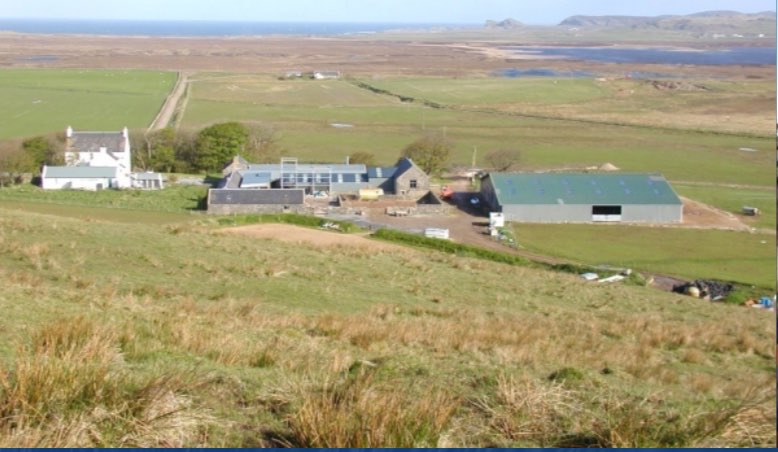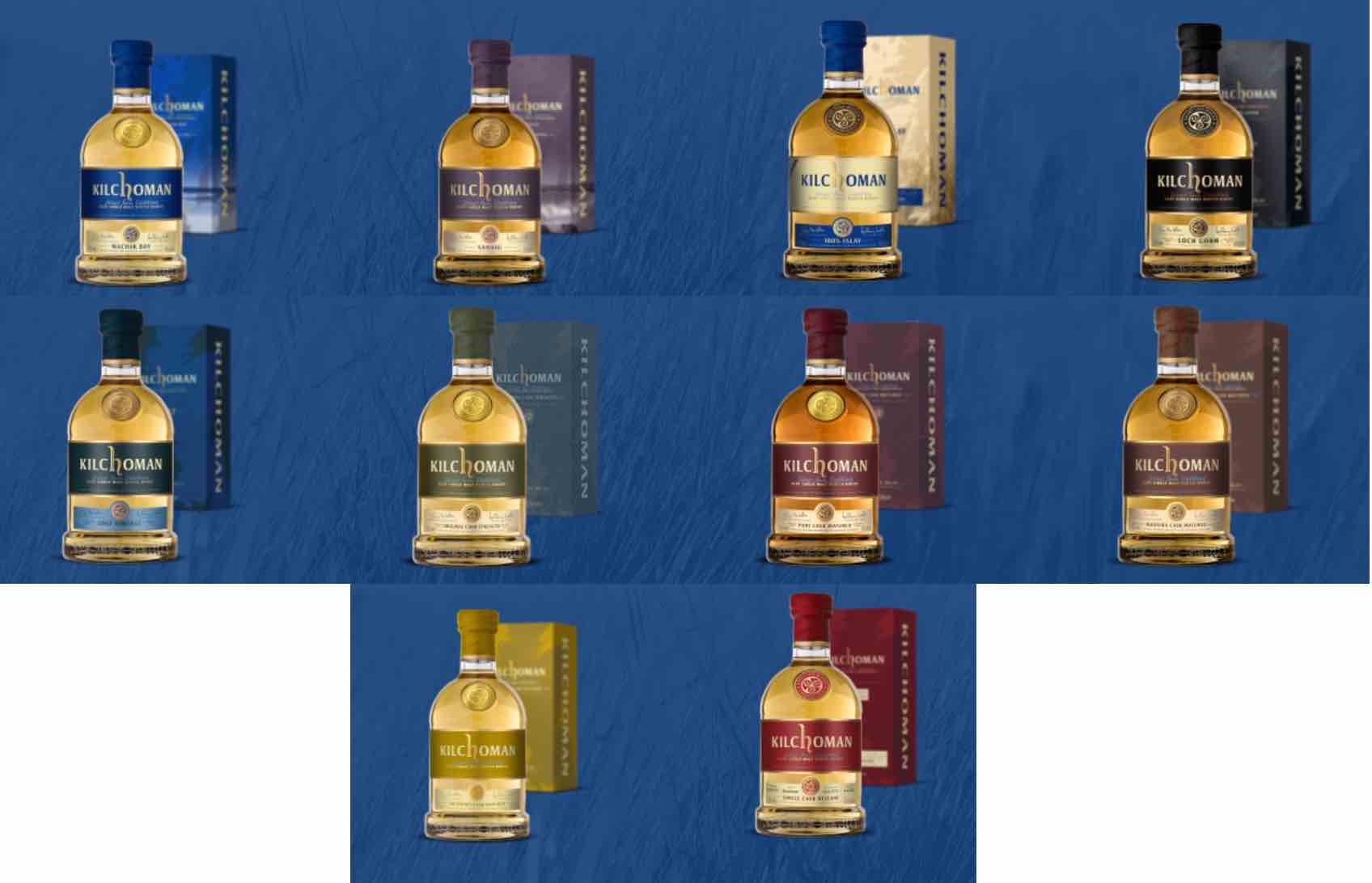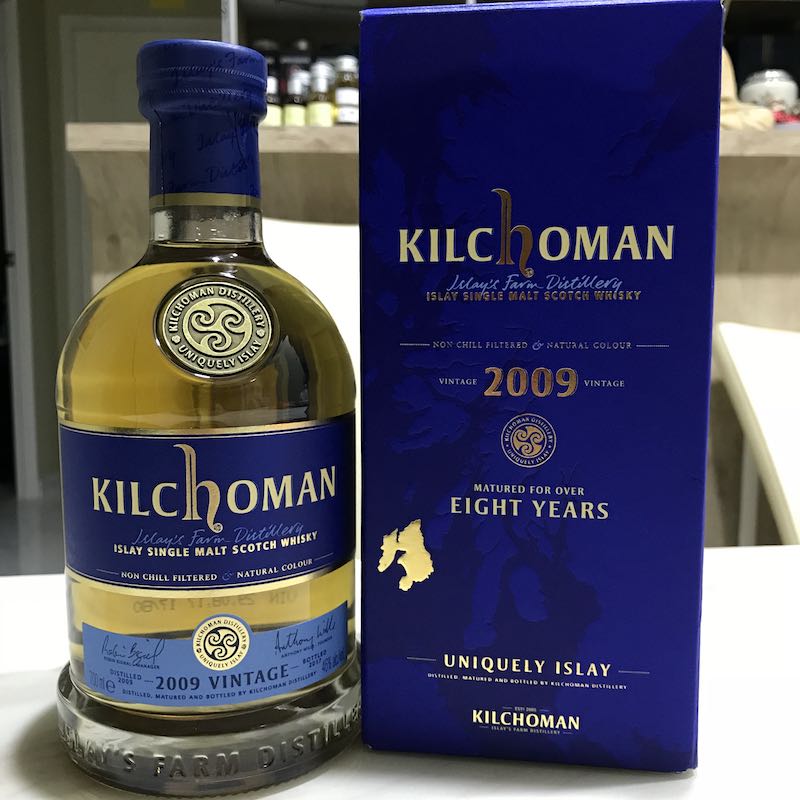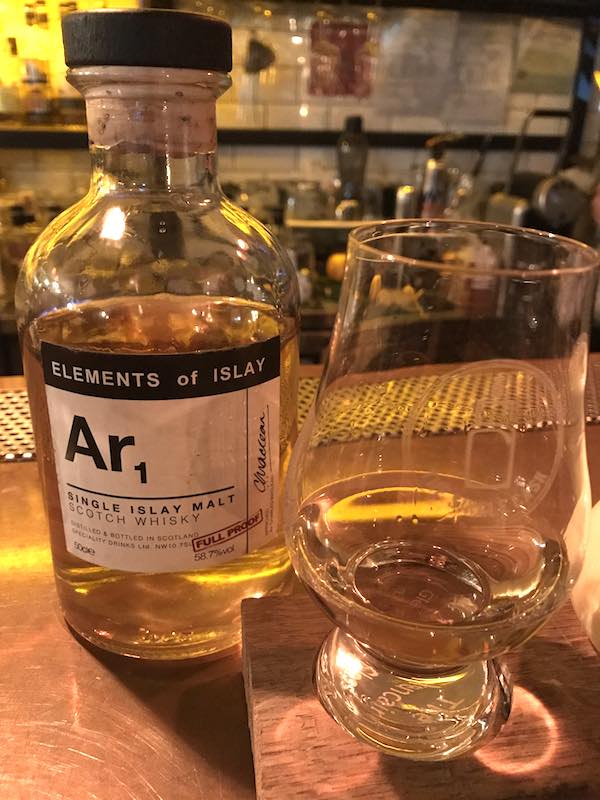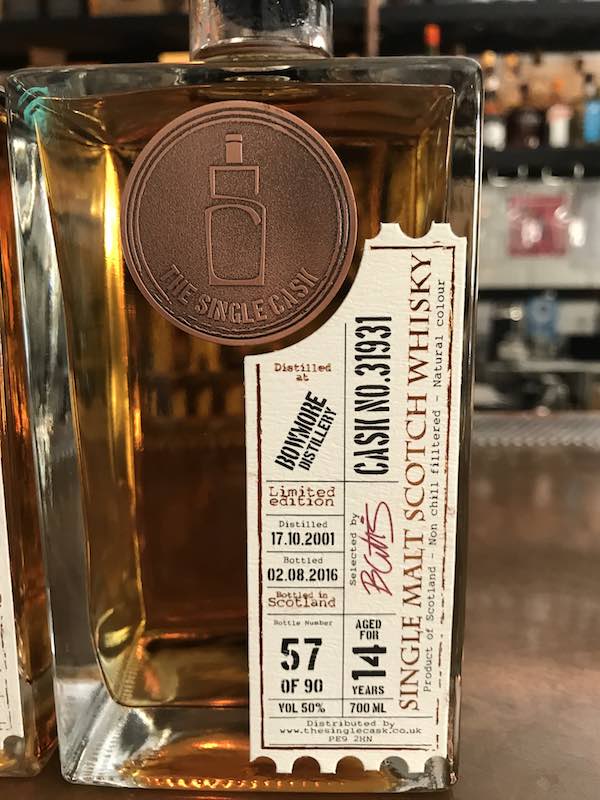
Chloe with her bottle of Laddie Valinch 28
Chloe Wood – the new brand ambassador from Bruichladdich, made waves in Singapore even before she arrived when news of her joining the Singapore team was released officially sometime last year. The community is excited to meet a young lady who has so much knowledge about the brand and who grows up in Islay. Everyone knew that Chloe has much to share with us about Bruichladdich and what they do.
Fast forward to WhiskyLive Singapore 2017 in November last year – Chloe was there to lead the Masterclass for Octomore. We were there as well and got to know Chloe very quickly. Her friendly manners got all of us high and jolly (well, the Octomores played a part too) and we had a wonderful time with her. We also learnt so much about Octomores from Chloe!
We invited Chloe for an interview with WhiskyGeeks and finally got a chance to sit down with her sometime in mid-December at her office for a chat.
Introducing Chloe Wood
For a start, allow us to introduce Chloe Wood. She is Islay-born, and have grown up in Islay for much of her life. Chloe is into sports, and is a qualified coach in hockey, rugby, football, badminton and swimming! She was also a certified lifeguard before working with Bruichladdich. As a child, Chloe was not introduced to the whisky scene and never had much connection with whisky. However, she knows that whisky is part of life in Islay and as she grew up, her interests grew as well. As Chloe wasn’t keen to attend university, she escaped with a diploma and headed straight for work. When the job came up at Bruichladdich “Laddie Shop”, she jumped at the chance to join the big family.
The Laddie Shop opened the world of whisky to Chloe. Her daily interaction with customers, her co-workers and the occasional chat with whisky legend, Jim McEwan, all gave her knowledge and grew her passion for whisky. Chloe did not look back since, and she is now four years with the company with much to give back.
The Wood Family
As an only child, Chloe is close with her cousins, who also works with Bruichladdich. Her family is deeply involved with Islay and Bruichladdich to be sure. Her grandfather owns Octofad Farm, which is part of the Bruichladdich family too. Her dad, Andrew Wood, who is in the construction business, built grain sheds on the farm in 2008/2009 to hold and dry the barley that the farmers are producing for Bruichladdich, and now, the operation has grown. Octofad Farm dried all the Islay barley used in the distillation at Bruichladdich. “30 tonnes of barley takes 12 hours to dry”, Chloe said.
Chloe’s mum, on the other hand, runs a B&B on Islay. There are always Bruichladdich fans staying at the B&B, so the Wood family is consistently in touch with whisky and Bruichladdich.
Working with Bruichladdich as a host in the Academy
Chloe worked for The Laddie Shop for about a year and a half before she transferred to a role in the Academy. As a host in the Academy, she led educational tours for staff, distributors and wholesalers. Her vast knowledge in the brands came largely from her role as an educator. In the Academy, the host led highly-detailed tours for three tracks – Bruichladdich, Botanist and Remy Cointreau’s brands. As the educator for the Bruichladdich track, Chloe shared that the tours included visits to the barley fields and water source, an experience to cut peat and of course the distillery tour with a chance to taste whisky from the warehouses. It ended with a tasting session of the Bruichladdich’s core range of whiskies. The whole event takes place over two days.
Unfortunately, it is only for staff, distributors and wholesalers. Visitors to the distillery can politely request to see the water source, but it is up to the distillery’s discretion to bring the visitors. If the weather is foul, it is likely not possible to hike to the water source.
Bruichladdich Cask Sales
Up until 2011, Bruichladdich sells casks to its fans and help them to store the whisky in their warehouse for a fee. There were over 4000 cask owners by the time the cask sales stopped. In 2001, each cask cost about £400 and the price increased to £1000 by 2011. The cost to store the whisky was growing, and Bruichladdich was finding it more difficult to upkeep the sales portion as there are just too many cask owners. Therefore, they stopped the programme in 2011.
Funny Stories from Chloe’s days as an International Tour Guide
Chloe worked as an international tour guide for Bruichladdich as well and hosted overseas visitors for distillery tours. One of the funniest stories that she remembered was the one time where she brought a group of huge, Swedish men around the warehouse, and she made the mistake of saying, “Well, if you can lift any of the casks in the warehouse, it is yours to bring home!” She was confident in her knowledge that the hogsheads and barrels in the warehouse were too heavy for a single man to lift. Unfortunately, one of the Swedish men found a small cask hiding in between the big guys. The small barrel is only 35 litres, and he lifted it easily! “I am bringing this home, Chloe!” Hollered the man jokingly.
Chloe was so stunned that she did not know what to do for a moment. Thankfully, the men did not get rowdy and put the cask down quite willingly after she promised to give them an extra dram during the tasting session. What an adventure!
A typical day as a Brand Ambassador
For those of us who think that brand ambassadors have a fantastic job, think again. We ask Chloe what her day usually is like and the schedule is quite a hectic one!
In the day, she has meetings with the marketing manager, training with bartenders or staff, designing her presentation and arranging the tasting sessions for her training. On top of that, she has to do supply planning for her travels as well as writing tasting notes and stories for the people she meets during her travels.
In the evening, she attends meetings with bartenders and bar managers as well as with other brand ambassadors who might be visiting. Sometimes, she needs to host or speak at events too. Besides all these, Chloe travels a lot. Spending six to seven months of the year on the road can be tiring.
Do you still want to be a Brand Ambassador?
The Laddie Valinch 28 Chloe Wood
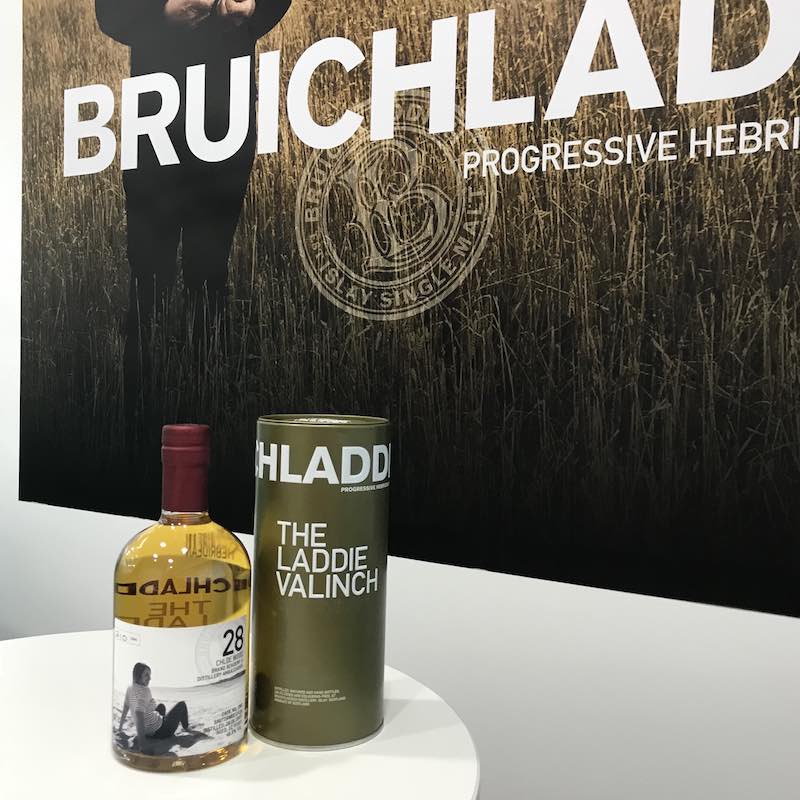
The Laddie Valinch 28 Chloe Wood
We asked Chloe about the Laddie Valinch 28 which was a special bottle for her. It got her name on it! The Valinch is a series of bottling by Bruichladdich to honour all the employees of the company. It can be a Laddie, or a Port Charlotte and each bottle is a single cask from the distillery. Currently, the Valinch series is at no. 31.
The Laddie Valinch 28 is a Sauternes cask (#780) with an outturn of 444 bottles. It is a 12 years old with an abv of 48.8%. We got the honour of tasting it straight from a new bottle that day. Man, it was fantastic! The nose is full of fresh honey, pears and green apple, a little grassy and light spice in the background. The palate is sweet like a white wine with an oily mouthfeel. Lemon mixed with the pears and green apples to form a tropical feel. Pleasant spice tickled the tongue for a warm feeling. The finish is long with lemony notes and a tingle of spice. It gets a little dry towards the end, just like an excellent white wine. The influence of the Sauternes cask was evident but nothing that overwhelms the character of the spirit. What an impressive dram!
Chloe’s Favourite Whisky
We asked if the Laddie Valinch 28 is Chloe’s favourite whisky, to which she said, “Oh! No, not really. I remembered that my first taste of whisky when I started work at Bruichladdich was an Octomore 12 years old. I fell in love with it immediately! It was 9 am in the morning, and Jim told me that he wanted me to try something special. That was my favourite!”
Besides that unattainable whisky, Chloe loves the Octomore 8.3 and the Bruichladdich Islay Barley bottlings! Those are her favourite for now. Are those your favourite too?
The Future for Bruichladdich
Bruichladdich has a bright future and one which we would like to be a part of. Besides her busy schedule, Chloe wants to expand the brand in the Asia and South East Asia region. She hopes to bring both Bruichladdich and Islay to the people here so that more people can experience the progressive innovation that is so prevalent in Bruichladdich. Chloe even wants to learn Mandarin so that she can communicate easily with Bruichladdich fans from China and Taiwan!
Besides that, education is also a priority in Chloe’s list of “must-do”. She wants to show people what whisky is all about, tell stories about the different brands and to bring Islay to everyone whom she meets! It is a pleasure to talk about her home and to invite people to visit Islay and Scotland.
What to look out for in Islay?
Besides all our talk about whisky, we also took the chance to ask Chloe what we should look out for when international visitors go to Islay. Her reply? “Check out the beautiful beaches, farmland, wildlife and sanctuaries. Eat fresh seafood, drink all the whisky and don’t drive if you are visiting distilleries. Oh, and don’t book tours too close to each other. The journey from one distillery to another can take you longer than expected! Lastly, watch out for wifi problem! It is an island after all!”
Advice for youths
Before we left, we asked Chloe if she has any advice for youths. Her biggest answer was TRAVEL! Travelling was indeed what she did as a youth and she shared that there is much to learn when you travel. You get to learn about yourself and others; see the world and know what you like. These experiences helped when you start working. We have to agree with that!
We wish Chloe all the best in her exciting journey for 2018, and we hope to see her again soon!
